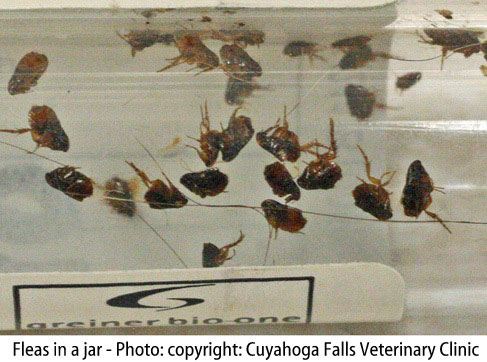Before I write about cat flea treatment, I would like to discuss cat fleas generally. Some time ago I wrote a succinct post on the life cycle of the cat flea – fascinating..:).
There are other posts from visitors (and me!) too. Here is a nice selection:
Update 16th October 2010: The Cat Flea: biology, ecology and control – this covers some very useful ground about how the flea resists cat flea treatments and life cycle.
- Flea treatments can kill – yes, these treatments are strong. We need to take care and read the instructions. Kittens are particularly at risk.
- Can cat fleas bite humans?
- Cat parasites – general discussion.
- How to control fleas – based on experience and for the average situation.
- Ragdoll cat skin scabs – flea allergies.
- Food grade diatomaceous earth – this is a substance that can help control fleas in industrial type environments.
There is no doubt about it; fleas are the single biggest minor health problem (but can be major) for cats on a day-to-day basis. We may not be aware of it but if we comb through a cat’s fur with a flea comb (a fine-toothed comb at 32 teeth per inch), we might well see a flea or two or more. Densely furred cats are particularly susceptible as fleas prefer this sort of fur and cats that venture outside are more likely to pick up fleas. But the fleas are carried inside so in the end both inside and outside are sources.
Yes, you probably know that people can bring in fleas to their home on their person and of course other animals living in the home might do it as well. So, a full-time indoor cat can get fleas.
The common cat flea (C.felis) is “the most common parasite on the cat’s skin”1. And all cats are affected by this horrible but strong parasite, except for cats living 5,000 feet above sea level. If you positively want to be in an environment where there are no cat fleas then you should move to a home that is 5000 feet above sea level! ?.
Fleas feed on the cat’s blood. This irritates the cat. I have been bitten by a cat flea and it leaves a small itchy spot, quite minor but if there are lots of fleas on a cat it can be cause serious health issues, cause the cat to become depressed, cause possible anemia and in rare cases, the humble cat flea, can kill the cat or kitten (most likely the latter). There is the secondary issue too, namely that some cats can be allergic to fleas (become hypersensitive to flea saliva). This causes intense itching and a skin reaction. The cat scratches exacerbating the problem. The Ragdoll skin scabs link above discusses this.
Signs or symptoms
The signs are pretty obvious. As mentioned, you can get a flea comb from the local vet or a human nit comb to check. The human nit comb (for combing out nits in hair) can be obtained from a local pharmacist but this is less effective than a proper flea comb. In fact, they are a poor substitute for the real thing as the teeth are a fraction too wide apart.
The combs are very fine. This makes them effective in picking up fleas but on double-coated cats there is resistance and they can pull. This will irritate a cat so combing should be gentle and slow. If a cat likes the experience, combing can be a pleasure for both cat and human and highly beneficial for the cat. But if combing is done too harshly the cat will resist making the process difficult and unpleasant for both cat and human. Flea combing can be a bonding experience as the cat immediately feels the benefit through the lack of irritation from the flea and the gentle scratching of the comb.
If there are fleas, the comb will pick up fleas and the salt and pepper bits that they produce. This granular substance is the flea’s feces and eggs. I find that the feces and eggs are more often at the base of the tail and in clumps around the shoulders of the cat. The fleas are more commonly around the chin, upper chest, shoulders, flanks near the shoulders and around the head area. They can sometimes be around the groin area too1, although I have never seen this myself.
When the flea is combed out, I immediately crush it with my thumb nail against the flea comb. This is my personal style of doing things. There are many alternatives. But speed is always required!
Appearance of flea
I have seen a gazillion cat fleas. Not that my previous cats were infested! And neither is my current cat: Gabs. Far from it. They go outside so are bound to pick them up particularly as foxes also go into the garden.
Cat fleas are amazingly strong and hugely athletic and they move fast. They are usually about 2 mm long, shiny, dark brown with long legs. They have a hard shell. This is their external skeleton. When crushed the shell “pops” – not nice. Sometimes they are smaller. My boy cat who has a single coat gets a few very small fleas. Maybe these are sub-adult, I am not sure. The flea has no wings but can jump huge distances vertically in relation to its size. This allows the flea to jump onto passing host animals. Fleas move rapidly through the cat’s fur and when combed out can escape by jumping and moving fast. Next, cat flea treatment…
RELATED: parasite pictures and cat parasites for pictures of cat fleas.



